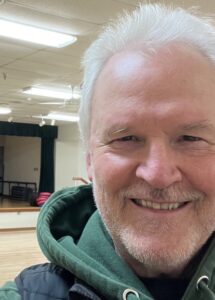You won’t need a boarding pass for Astoria, Oregon.
Crossing the Columbia River from the Washington side doesn’t require a ferry, either.
However you will need a Boarding Pass for the Columbia River Maritime Museum.
More than a nice place for a regional story, CRMM tells a big history in a big way.
Astoria and the Columbia are part of the same story, but why a museum? Why here?
I believe museums are part of a city’s identity.
From the Louvre in Paris, the British Museum in London, to the Smithsonian in Washington, D.C., museums try to explain how things were to an audience who already have opinions.
Right or wrong, personal opinions on settled history get updated by good museums. That’s why I make time for them in cities big and small.
The fur, timber and canning industries have left a long lasting and still visible legacy on the community.
Today Astoria embraces its newest industry – tourism. The vibrant waterfront and downtown is packed with old buildings, some renovated into new and thriving businesses, some still waiting to be revived. Restaurants, antique shops, galleries, clothing stores, book shops and more line the streets. Museums, parks, trails, bird watching, live music, and theater provide activities for just about everyone.
Did Someone Say Museums In Astoria Oregon
Columbia River Maritime Museum: This 24,000 square foot exhibit space contains an extensive collection of nautical artifacts with interactive displays on shipwrecks, fishing, lighthouses, navigation and naval history. Remodeled and expanded in 2001-02, this nationally recognized museum is a treasure trove of wonders.
My museum experiences informed me that this was nationally recognized before I read the words.
From the first step inside, you can feel it. For one, if it’s a cold, wet, day it’s good to be inside anywhere in Astoria. Try not to feel ashamed for seeking shelter after exhibits show the hardships of earlier times.
Were people back then tougher than us? Probably, but we look back from comfort. And maybe a little guilt. Good museums do that. They draw the picture, then put you in it.
This particular museum excels at putting visitors in the picture. Having the Columbia River right next door helps. No matter how you feel about the day, you’re doing better than the man in the water.
Columbia’s First River City
In 1811, British explorer David Thompson, the first person known to have navigated the entire length of the Columbia River, reached the partially constructed Fort Astoria near the mouth of the river. He arrived two months after the Pacific Fur Company’s ship, the Tonquin.
The fort constructed by the Tonquin party established Astoria as a U.S., rather than a British, settlement, became a vital post for American exploration of the continent. It was later used as an American claim in the Oregon boundary dispute with European nations.
Astoria was the anchor city of America’s move west.
The streets gives the same ‘walking in the footsteps of history’ feeling as more celebrated cities. However, no other city can claim the footsteps of Lewis and Clark, Sacagawea and York.
And no other city can claim the Columbia like Astoria. It was, and is, the conduit of the future, a big link in the modern supply chain. Shipping once passed by what could have remained a backwater community with a colorful past.
It still pass by, but now under the gaze of a better informed populace. Education is the saving grace. Knowing what happened drives curiosity and speculation of what could have happened, and what might happen next.
What Happens Next
We get in the car and drive away from Astoria after a visit, carrying new information.
The Columbia River Maritime Museum passes on a load of new things to ponder.
This group developed a bold and visionary plan for a maritime museum in Astoria, Oregon, near the mouth of the Columbia River. In 1962, the idea came to fruition in the form of the Columbia River Maritime Museum, a museum that today has become one of the nation’s finest institutions of maritime history, boasting the largest collection of Pacific Northwest maritime artifacts in the country.
While we talk it out while driving down the road, the museum gives an idea of what the sailors face on their way out of the Columbia.
They have to cross The Bar. I felt the Graveyard of the Pacific welcoming new visitors after touring CRMM.
“Absolutely loved this museum. It was our first stop when we got to Astoria and I feel like it really set the mood for the rest of the trip. I’m not super into history but this museum was very fascinating even if you’re not a history fanatic. They did an amazing job incorporating the different elements of Astoria’s history including the historical shipwrecks, the prevalent Coast Guard, and how much modern boating / rescue technology has evolved. Highly recommend!”
Stay safe and dry, but absorb what Astoria, Oregon has to offer. It’s more than you’ll expect.
Start with the museum. You know which one.






